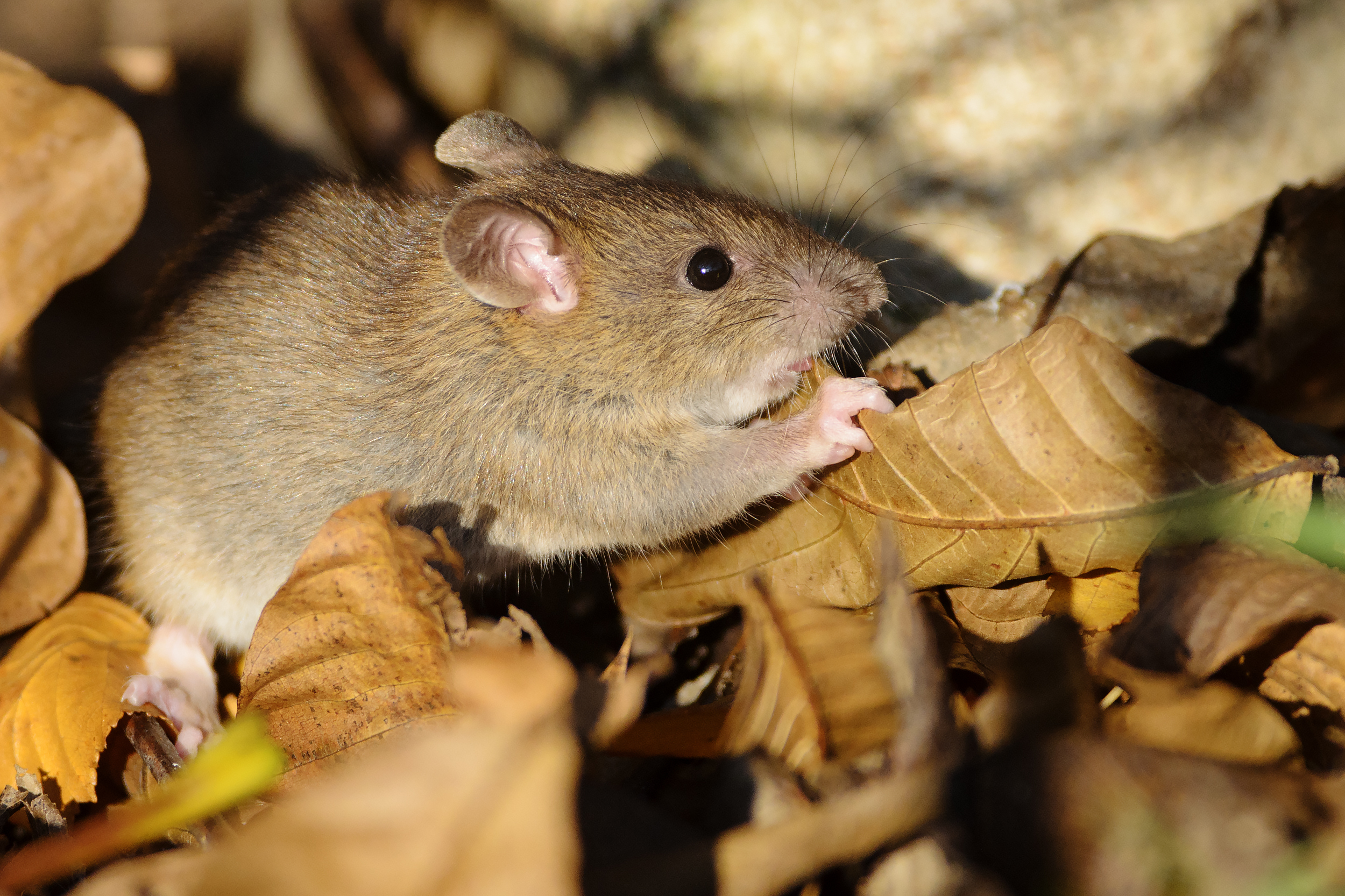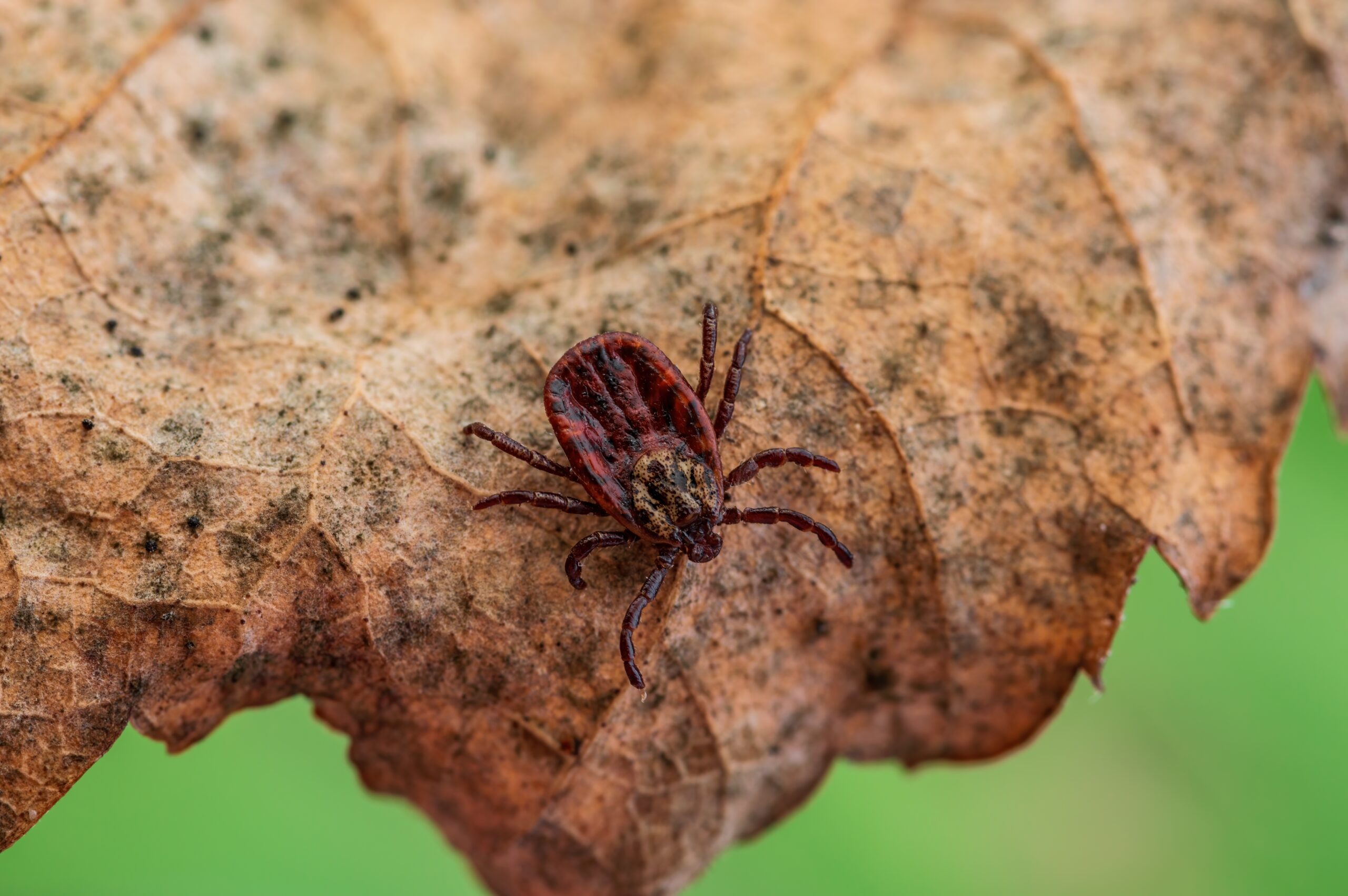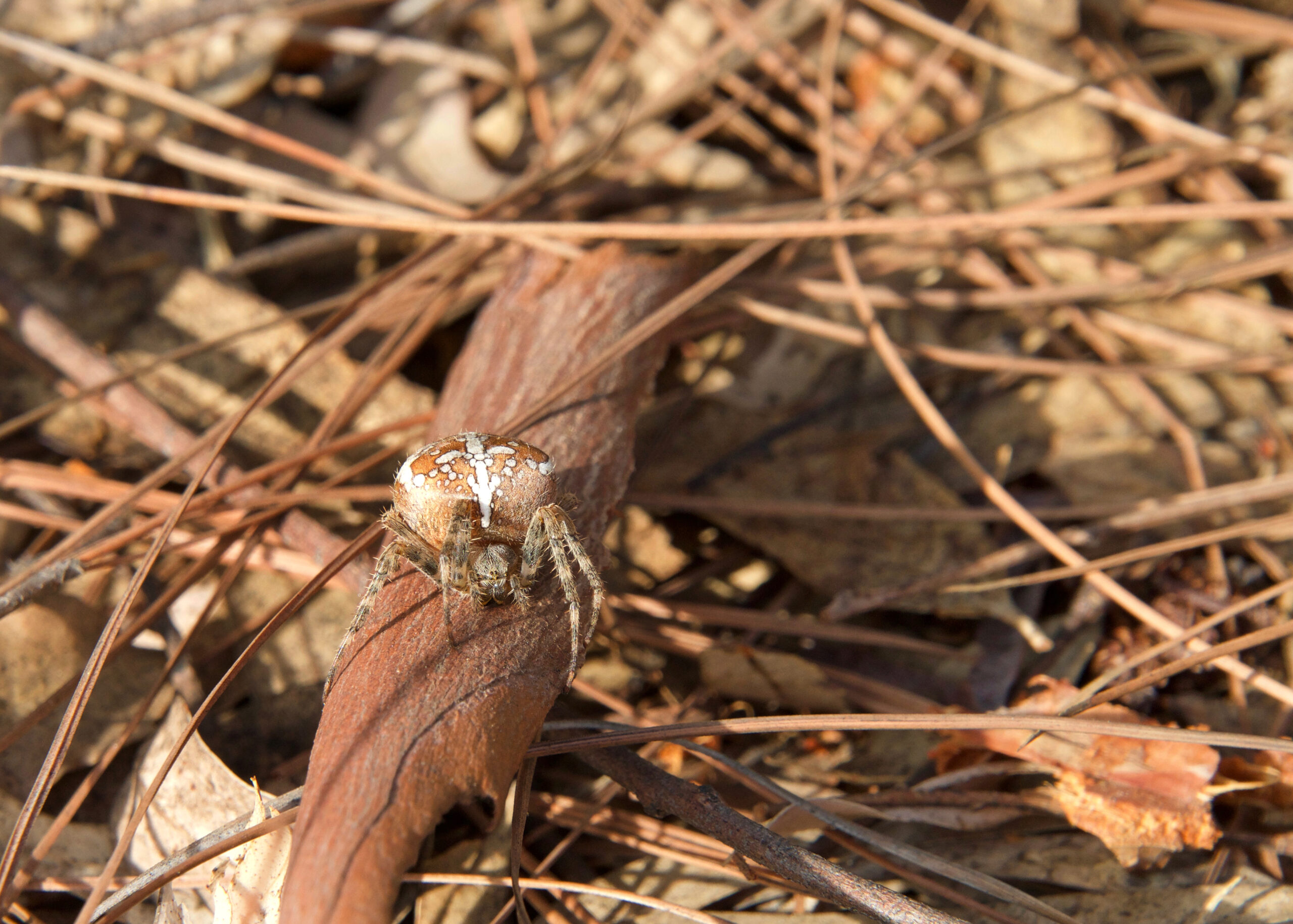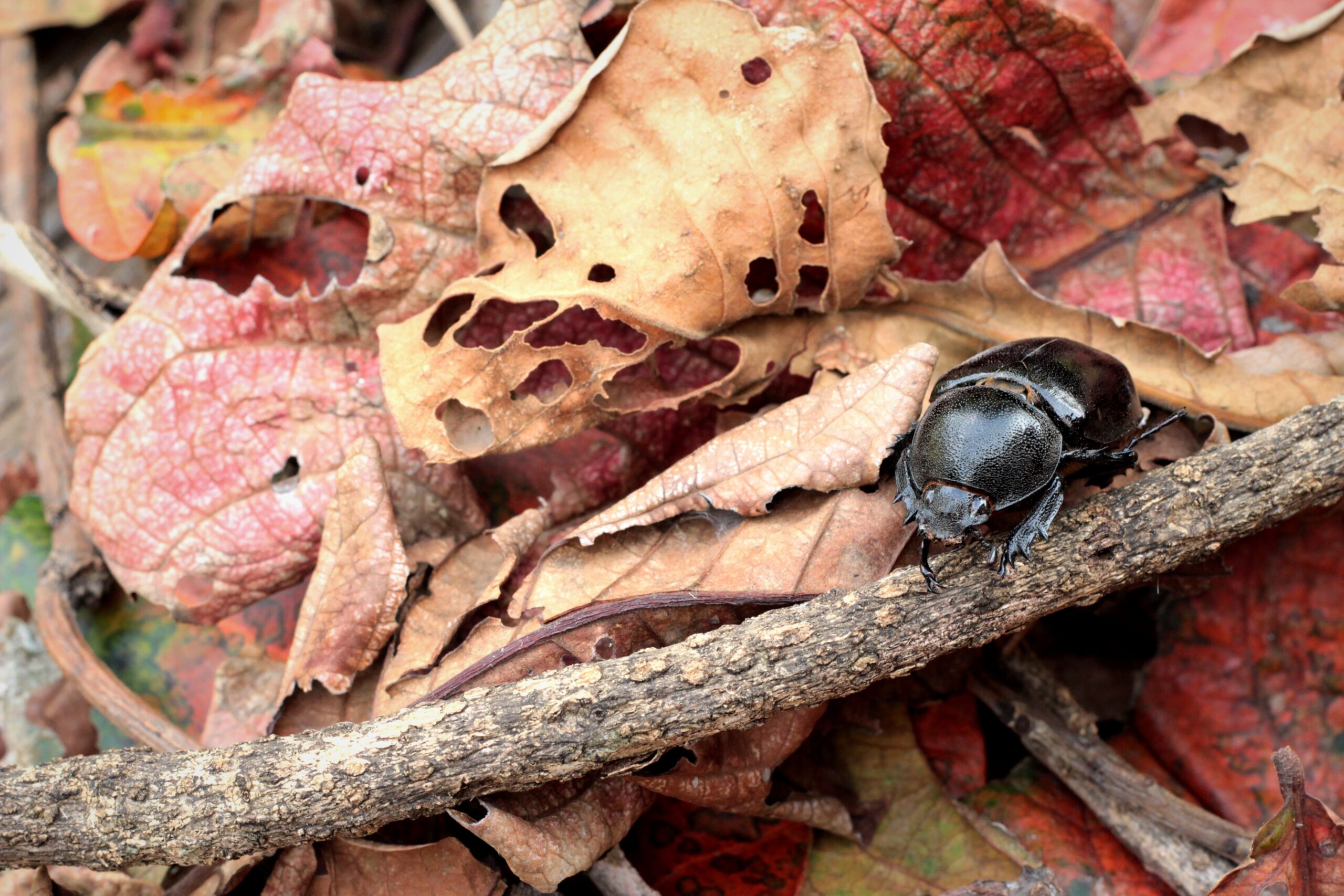5 Pests Commonly Found in Leaf Piles
5 Pests Commonly Found in Leaf Piles
As we traverse further into autumn, the leaves continue to pile up and add yet another task to the unending list of yard chores to be done. Raking leaves isn’t the most fun task ever — we recommend listening to music or a podcast while doing so to make it more interesting — but it is an essential one. The longer piles of leaves sit untouched, the more likely they are to attract pests. Critters like leaf piles for various reasons, the most common being a reliable food source and a warm shelter. Let’s discuss five of the most frequent leaf pile pests before we provide our best tips on how to prevent pests from making a mess of your leaf-littered yard this fall.
Rodents

Possibly the most common leaf pile pests, rodents seek out these clusters of leaves for both the shelter and the food sources. Mice and rats can hide under thick piles of fallen leaves and stay warm due to the insulation qualities of the mass. They will hide in the shelter of the leaves in between foraging for food, which is conveniently located either in or close to the pile. When the weather begins to steadily cool down in the fall and winter, rodents have to get even craftier with their meals.
If they are fortunate enough to find idle leaf piles nearby, they will automatically be drawn to these for the insects that are hiding within. Rats and mice will eat any trash, leaf litter, and insects that they find inside their leaf pile, as their only real criteria for food is that it has to contain protein to give them energy. They will also have access to twigs and sticks to gnaw on throughout the day. Since they have open-rooted teeth, mice and rats need to constantly chew on tough objects to keep their teeth at a safe length. These pests won’t mind living in leaf piles when the weather is still bearable, but once the winter chill begins to set in, they will try to invade the nearby houses for a secure overwintering shelter.
Ticks

This may seem like a strange pest to include since ticks are usually associated with summer hikes on nature trails. But even these external parasites like to hide in leaf piles for their own reasons. One such reason is the warmth provided by the mound of leaves, as ticks need warmth to survive. If they find a warm shelter in the fall and winter, ticks can be a year-round issue for any mammals that are unfortunate enough to be in the vicinity. The deer tick is the main antagonist of autumn leaf piles, especially for homeowners whose yards back up to wooded areas that house all kinds of ticks.
If a leaf pile sits idle all fall and winter, ticks can easily live within the mass until the spring sun warms the earth underneath. This risk alone is a good reason to never jump into a leaf pile that has been sitting out for weeks at a time (also a great lesson to teach your kids). Ticks can even hide in thick brush and overgrown grass, so it’s just as important to maintain the rest of the yard as well, but more on that later. These sneaky pests aren’t just a problem for humans who enjoy leaf piles, as our furry friends also like to immerse themselves in the leaves. Dogs and cats often lay in idle leaf piles, but this can be a risky move if there are any ticks inside that are waiting for their chance to latch onto an unsuspecting mammal.
Spiders

Speaking of hidden pests, spiders are some of the most frequent leaf pile pests due to their natural talent for hiding in any environment. They can live within the mass of leaves or in the topsoil just underneath. Web-building spiders weave their strands amidst the pile and easily catch their smaller prey that is also enjoying the fallen leaves. As for the hunting spiders, they have their pick of food sources both in the pile and in the general yard. Spiders will likely try to make their way up to the gutters of the house at some point, especially if those gutters are clogged with leaves and organic debris. This provides them with extra security through elevation in addition to a plethora of new food sources.
Most spiders are still quite active in fall and winter, provided they have a warm shelter to protect them from the brittle cold. One of the most common spiders in these colder months is also unfortunately one of the most dangerous: the brown recluse. This hunter is one of the most frequent inhabitants of idle leaf piles. Brown recluses prefer piles of leaves over other organic matter because they have their ideal shelter of a dark and solitary place. If you have leaf piles that have been sitting out for a while, never reach your bare hands into them to clean up. Any hidden brown recluses will deliver a nasty bite filled with their venom. Untreated bites allow the infection to spread throughout the person’s body, so please seek medical attention immediately if you or anyone in your home is bitten by a brown recluse.
Earwigs

Considering the fact that earwigs love damp and dark spaces, it makes sense that a leaf pile would be their idea of paradise. All of their typical food sources can be found in a mass of leaves as a bonus. Earwigs commonly eat decaying organic matter, leaf litter, and smaller insects. Their favorites include caterpillars and spider mites, which can both be found in leaf piles. Earwigs are so small and dark-colored that they can easily hide within clumps of leaves throughout the colder months. They have pincers on the ends of their bodies as a defensive measure, but earwigs are some of the least aggressive pests ever. We still recommend not touching them, especially if they are trying to stay hidden in their safe leaf pile.
Since earwigs need extra moisture to survive, any autumn rain that dampens the leaves is a true blessing for them. That being said, they are still cold-blooded insects with energy levels that are completely dependent on the outdoor temperature. They are fully content to live within leaf piles throughout the fall, but earwigs will seek out a better shelter for the winter months. This can lead them straight into nearby houses, where the earwigs will look for the rooms with the most moisture, such as the kitchen and the bathroom. They will hide out for the winter, then begin reproducing in the warm days of spring.
Beetles

The most general category of all, beetles are another frequent face in untouched leaf piles. They are the largest order of insects and come in all sizes and temperaments, but many beetles enjoy leaf piles across the board. They generally prefer areas that are safe, warm, and dark, and an idle leaf pile checks all the boxes. They also have easy access to all kinds of food sources, regardless of their specific diet. From decaying organic matter to small insects to actual leaves, beetles certainly have their choice of food when they inhabit a sizable leaf pile in any given background.
Some beetles can handle the cold temperatures better than others, so the population of beetles in your backyard depends on both the region and the current weather pattern. Many of them will lay their eggs in an idle pile of leaves in order to give their offspring an instant food source, which introduces a new generation of pest problems for you. Most common species are harmless to humans, but they are still a nuisance once they turn to our homes for their ideal shelter from the elements. Beetles also like clogged gutters and uninhabited basements, so it can be easy to miss them if they do get inside. The most common beetles that enjoy leaf piles (and our homes) include ladybugs, stink bugs, boxelder bugs, and Japanese beetles.
Preventing the Pests

If you have one or more untouched piles of leaves in your yard, you are unintentionally attracting pests into your yard. Just think of how attractive a naturally insulated shelter would be to tiny critters, and it’s easy to see why many species would gravitate towards any mound of leaves. But these pests won’t be satisfied with their designated leaf pile forever, and will immediately look to nearby houses and buildings for their true shelter from the cold. This is exactly why preventing pests from invading your yard in the first place is essential to maintaining a pest-free home.
Our tried-and-true tips on preventing pests from invading your yard are:
- Rake the leaves: Of course, this is the most important step. It’s a good idea to rake the leaves as soon as possible rather than letting them sit for weeks or months at a time. If leaves aren’t cleaned up before long, they can develop mold and attract even more pests.
- Use caution: That being said, we still recommend taking the proper precautions when cleaning up your leaves, especially if they’ve been sitting for a while. Never blindly reach into a leaf pile to grab leaves because you might get more than you bargained for if you stumble upon some hidden pests. Before handling leaves, put on thick work gloves or gardening gloves to protect your hands.
- Do yard work: The leaves are the main focus of this blog, but that doesn’t mean the rest of the yard should receive less care in the meantime. Pests like to hide in overgrown landscaping and tall grass, which will put them in closer proximity to your home. Trim any tree branches that touch the house, remove all weeds, and cut back any bushes and plants.
- Mow the lawn: An uncut lawn is appealing to all kinds of pests, especially if there’s also a layer of fallen leaves on top. Leaf piles that sit out on the lawn for a long time can actually hurt the grass and cause it to develop diseases. After raking the leaves, mow the lawn to an appropriate length.
Guard Your Home With Green
Raking leaves and maintaining your yard are important tasks, but do you know what else is important? Receiving regularly-scheduled pest control services! Whether you have a current pest problem that needs an efficient solution or you want to prevent pests from causing any issues in the first place, Green Pest Services is here to serve you. Our technicians are fully trained and experienced in treating dozens of pest species, and we will never leave a pest problem unsolved. We begin every service with a thorough inspection of the property in order to uncover all areas of pest activity and determine the species involved. This allows our team to then create a treatment plan that is completely customized to solve your specific pest issues. We look forward to keeping you pest-free all year long, so contact us today to learn more about how our reliable pest control services will make pests “leaf” you alone for good!
Citations
Cepeda, M. (2016, September 28). Here’s why you should never let your kids jump in leaf piles. Country Living. Available at https://www.countryliving.com/life/a39990/never-jump-in-a-leaf-pile/ (Accessed on September 28, 2023).
Ignored leaf piles — An open invitation for pests, lawn disease & more. (2021, November 8). GrowPros. Retrieved October 30, 2023, from https://www.growproslawncare.com/blog/ignored-leaf-piles-an-open-invitation-for-pests-lawn-disease-more/
Pests that love leaves. (2020, November 13). Maggie’s Farm. Retrieved October 30, 2023, from https://maggiesfarmproducts.com/blogs/bug-help/pests-that-love-leaves
The leaf piles that you’re ignoring are inviting pests to your property. (2021, November 18). Rose Landscape Services. Retrieved October 30, 2023, from https://www.roselandscapeservices.com/blog/the-leaf-piles-that-youre-ignoring-are-inviting-pests-to-your-property/
Wasson, S. (2023, October 18). 10 pests commonly found in fall leaves. Today’s Homeowner. Available at https://todayshomeowner.com/pest-control/guides/10-pests-commonly-found-in-fall-leaves/ (Accessed on October 30, 2023).
8 Creative Ways to Have a Pest-Free Fourth of July
8 Creative Ways to Have a Pest-Free Fourth of July 8 Creative Ways to Have a Pest-Free Fourth of July Summary: The Fourth [...]
A Simple Guide to Preventing Stinging Pests
A Simple Guide to Preventing Stinging Pests A Simple Guide to Preventing Stinging Pests Summary: Stinging insects are more active in warm weather, [...]
These 10 Natural Mosquito Repellents Can Actually Help
These 10 Natural Mosquito Repellents Can Actually Help These 10 Natural Mosquito Repellents Can Actually Help Summary: Natural mosquito repellents are easier to [...]
How to Get Rid of Carpet Beetles
How to Get Rid of Carpet Beetles How to Get Rid of Carpet Beetles Summary: Carpet beetles are sneaky pests that don’t usually [...]
How Do Roaches Affect Asthma and Allergies?
How Do Roaches Affect Asthma and Allergies? How Do Roaches Affect Asthma and Allergies? Summary: It’s no secret that pests impact human health, [...]
These 5 Carnivorous Pests Might Surprise You!
These 5 Carnivorous Pests Might Surprise You! These 5 Carnivorous Pests Might Surprise You! Summary: There are many eco-friendly ways to prevent pests, [...]

